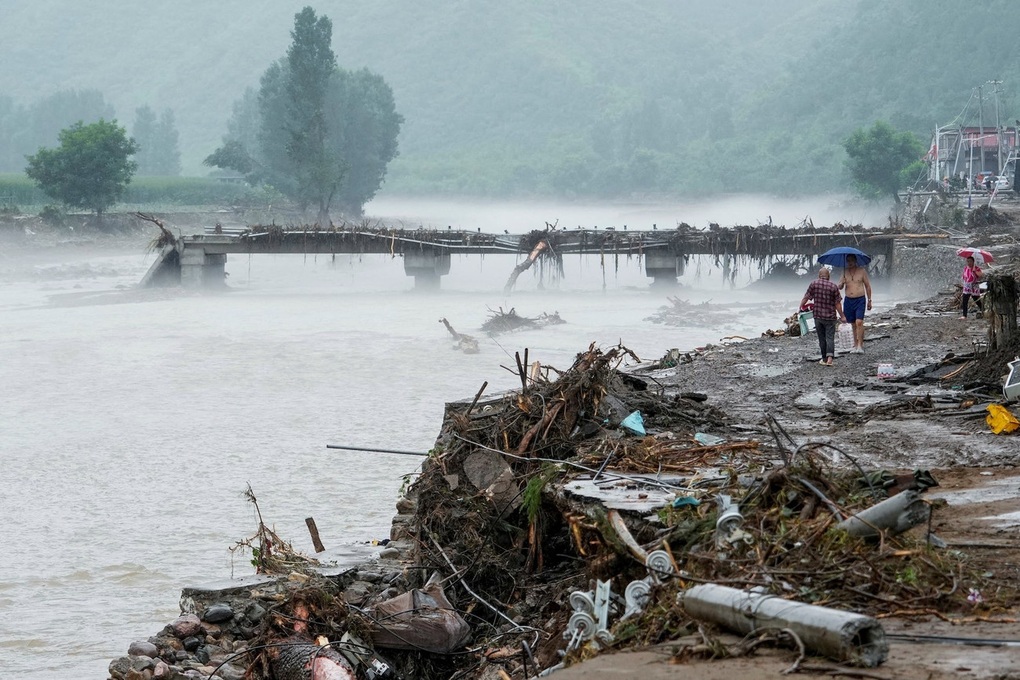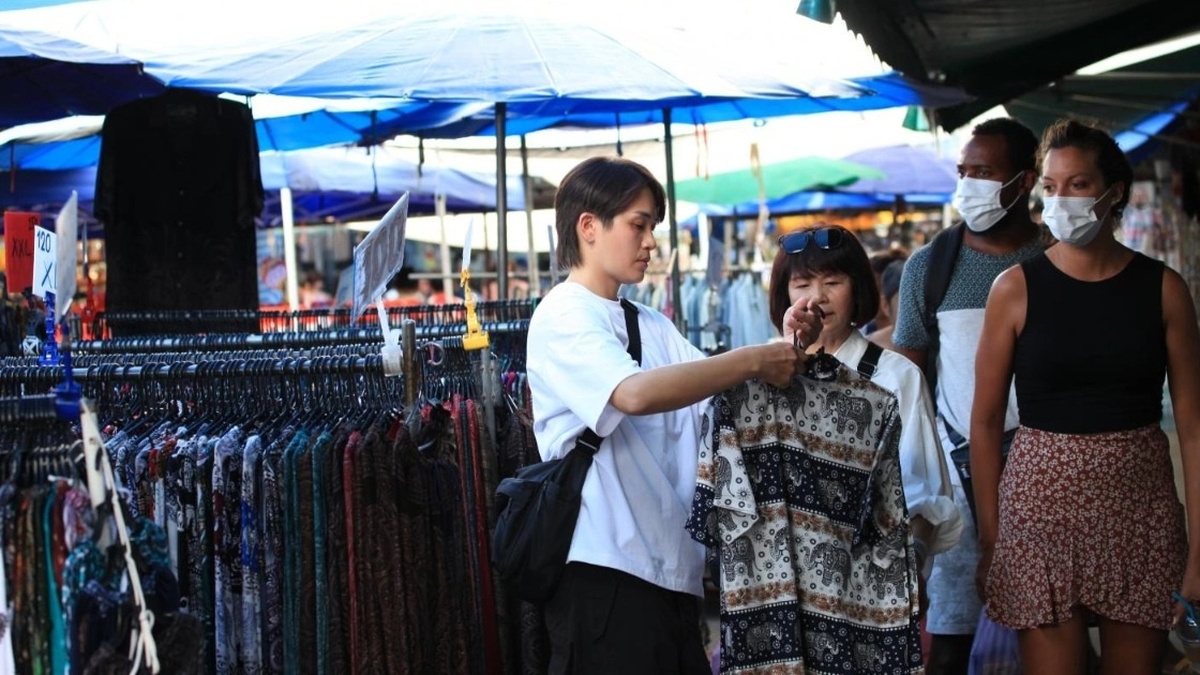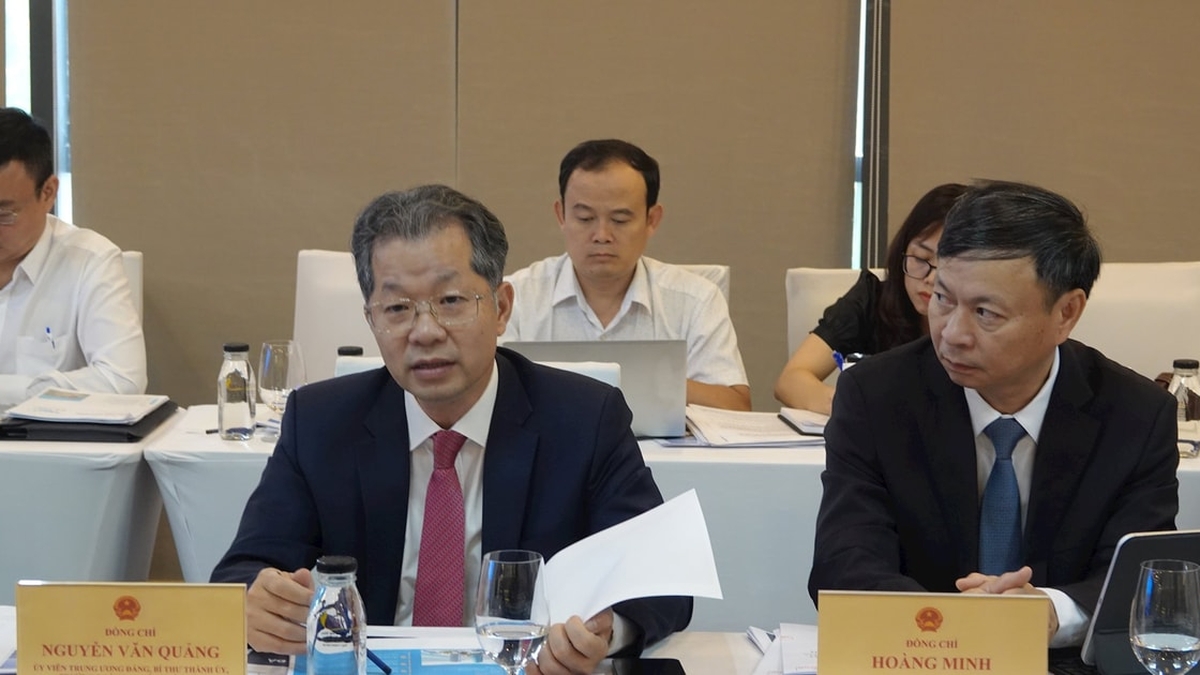Heavy rain began to fall on Beijing and surrounding provinces on July 23 and continued to intensify on July 28, with rainfall reaching 543.4mm. This figure is close to Beijing's average annual rainfall of about 600mm.
According to Xinhua, as of midnight on July 28, 30 people had died in Beijing. Chinese authorities had to evacuate more than 80,000 Beijing residents due to heavy rain and issued the highest level of rain and flood warning, advising people not to leave their homes.
The floods also damaged 31 roads in Beijing, of which 16 have not been fully restored. Power supply was disrupted in 136 villages. Telecommunications infrastructure was severely damaged, with 62 fiber optic cables broken and 1,825 base stations paralyzed.
China: Extreme heavy rain swept away cars in Beijing, 30 people died ( Video : X).
Chinese President Xi Jinping said there had been damage in Beijing as well as Hebei, Jilin and Shandong provinces. He ordered authorities to “go all out” in search and rescue efforts, stressing that people in flood-prone areas must be evacuated and resettled in a timely manner to minimize casualties.
China's National Development and Reform Commission (NDRC) is urgently allocating 200 million yuan (more than 730 billion VND) to support Beijing in flood relief efforts.
The funds will mainly be used to repair damaged transportation infrastructure, water supply systems, health care and other infrastructure, as well as public services in Miyun and Huairou.
China's Ministry of Finance has also allocated 350 million yuan (more than 1,270 billion VND) to support disaster relief efforts in Beijing and other provinces.

A bridge damaged by floodwaters (Photo: Reuters).
Chinese President Xi Jinping also called on authorities to plan for worst-case scenarios, clarify responsibilities, implement flood control measures, closely monitor, reinforce vulnerable and key areas, and allocate rescue forces and supplies.
As of July 29, more than 730 million cubic meters of water had poured into Miyun Reservoir, the largest reservoir in northern China, and 120 million cubic meters of water had been released since the afternoon of July 27. Beijing has urged people to stay away from downstream rivers, where water levels are expected to remain high.
Chinese President Xi Jinping also called on authorities to plan for worst-case scenarios, clarify responsibilities, implement flood control measures, closely monitor, reinforce vulnerable and key areas, and allocate rescue forces and supplies.
Chinese Premier Li Qiang also issued a directive on the same day, emphasizing that the floods in Miyun County had caused large and serious casualties, and requested that all efforts be focused on searching for missing people, ensuring proper arrangements for people in disaster areas, and making every effort to minimize casualties.
Source: https://dantri.com.vn/kinh-doanh/mua-lu-lon-nhan-chim-bac-kinh-thiet-hai-nghiem-trong-ve-nguoi-va-tai-san-20250729194618756.htm






















![[Photo] National Assembly Chairman attends the seminar "Building and operating an international financial center and recommendations for Vietnam"](https://vphoto.vietnam.vn/thumb/1200x675/vietnam/resource/IMAGE/2025/7/28/76393436936e457db31ec84433289f72)












































































Comment (0)